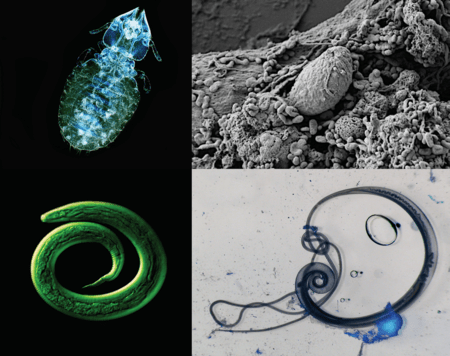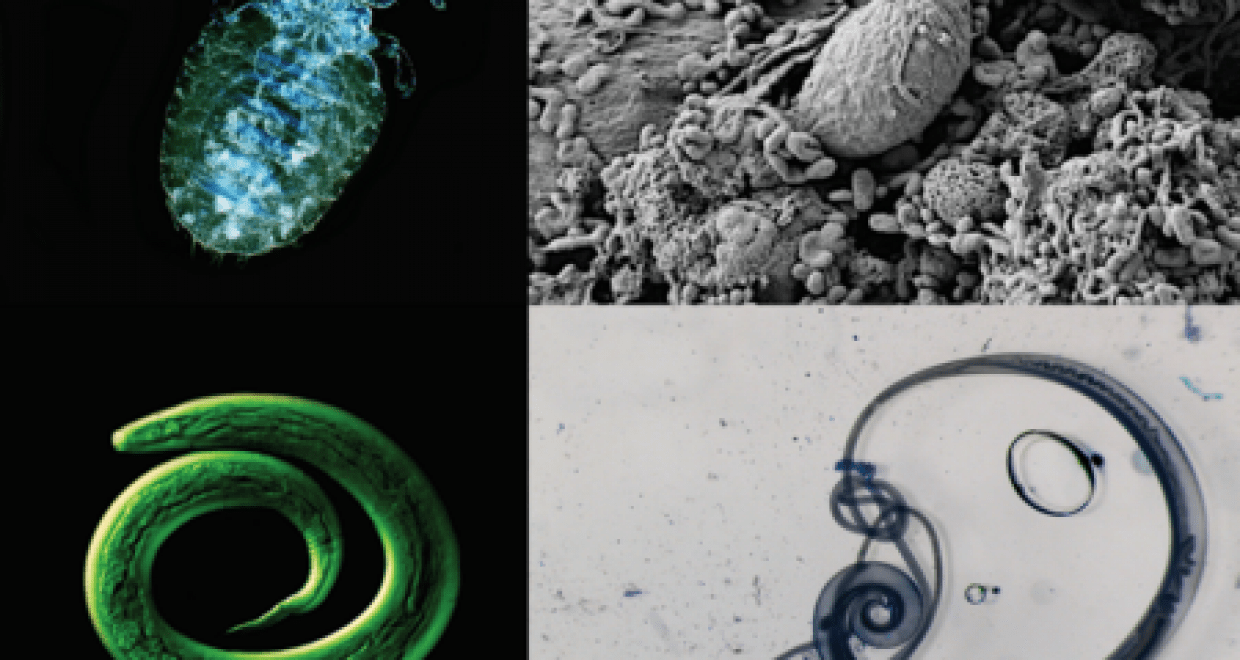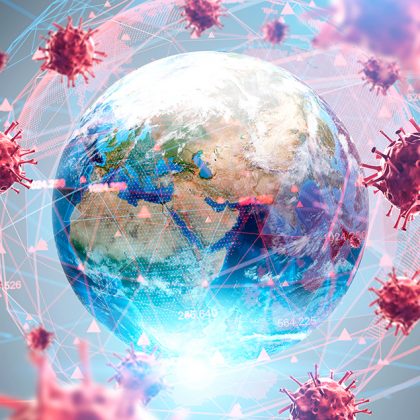World NTD Day – Progress, Challenges, and the Path to Elimination
On 30th January, we celebrate World Neglected Tropical Diseases Day. This annual celebration highlights the hard work and achievements of the many researchers, medical workers, NGOs and other committed individuals in this field, and acts as a convenient forum to demand and sustain the necessary concerted actions to #BeatNTDs. Cambridge University Press recognises the importance of this day and is participating by providing free access to NTD articles, as well as exclusive free access to several special issues, within its journals Parasitology and Journal of Helminthology. These papers were selected by each journal’s editor, showcasing the authors’ efforts in protozoology & helminthology
What are the NTDs – a brief history
Although these diseases have blighted human health from time immemorial, the NTD grouping is a recent concept. It began less than two decades ago, traced back to the formal revision of WHO’s approach to the control of “other communicable diseases” which was first discussed in Berlin, April 2005. This meeting’s deliberations led to the WHO 2006 report “Strategic and technical meeting on intensified control of neglected tropical diseases: A renewed effort to combat entrenched communicable diseases of the poor” . This defined a new direction in “tool-ready” control approaches with integrated preventive chemotherapy (PC) and in implementation of individual disease management (IDM) plans. Collectively, it was to spur commensurate action in control by expanding on “the big three” (HIV, tuberculosis and malaria) to become “the big four” by inclusion of NTDs.
Control of NTDs is recognised in the UN 2030 Sustainable Development Goal (SDG) 3.3 target as “By 2030, end the epidemics of AIDS, tuberculosis, malaria and neglected tropical diseases and combat hepatitis, water-borne diseases and other communicable diseases”. They now receive their own progress indicator, 3.3.5 “Number of people requiring treatment and care for any one of the neglected tropical diseases (NTDs) targeted by the WHO NTD Roadmap and World Health Assembly resolutions and reported to WHO”. This indicator sets a formal recording bar for demand and sustained action across all 18 NTDs, and their associated variants, which include rabies, schistosomiasis and echinococcosis. Indeed, action on several of these NTDs falls squarely within the remits of Parasitology and Journal of Helminthology, making our selected NTD papers highly relevant.
In Parasitology
It was David Molyneux, with key proponents Lorenzo Savioli, Alan Fenwick and Peter Hotez, who helped coin then promote the term ”neglected tropical diseases”.
The first article in the Parasitology NTD Day collection is led by Brice Meulah: Current status of schistosomiasis in school-aged children in Mwanga district, Tanzania: impact of two decades of annual Mass Drug Administration programme. This cross-sectional study assesses the prevalence of Schistosoma haematobium and Schistosoma mansoni among school-aged children in Mwanga district, Tanzania, where annual MDA has been implemented for 20 years. Using the upconverting particle-based lateral flow (UCP-LF CAA) test, the study reports a schistosomiasis prevalence of 20.3%, significantly lower than estimates from alternative diagnostic methods. Despite notable progress in controlling infection rates, findings suggest that transmission persists, emphasizing the continued need for accurate diagnostics and sustained intervention measures to combat schistosomiasis effectively.
Unlike many of the helminthiases where there are tool-ready drugs and PC strategies, options for effective therapeutics and IDM for the various forms of Leishmaniasis remain sub-optimal. Meulah et al. highlight recent progress on developing and applying medicines against visceral Leishmaniasis, although there is still significant room for improvement.
In addition to causing disease, the unusual basic cellular biology of these kinetoplastids has long fascinated researchers and tells a very different evolutionary story to other Eukaryotes. It is their early acquisition(s) of endosymbionts and later modifications thereof that sets a unique series of early evolutionary events neatly set in context.
Like all parasitic relationships either internal or external, the balance of this relationship may change with vagaries of evolution. None more so than with abrupt or saltatory changes brought about by hybridisation within schistosomes that also brings to new light cryptic aspects of zoonosis. Like many of the NTDs, One Health approaches are needed, which align well with several of the UN SDGs.
The next article in the collection is led by Gloria M. Mulenga: An evaluation of African animal trypanosomiasis control strategies in remote communities of Eastern Zambia, which examines the effectiveness of different control strategies used by communities to mitigate the impact of African animal trypanosomiasis (AAT) on livestock. Conducted in Mambwe district, the study assesses incidence rates in cattle following treatment with various interventions, including Diminazene aceturate, Isometamidium chloride, Cyfluthrin pour-on, and Cypermethrin targets. The findings indicate a significant reduction in AAT incidence across all treatment groups, with Cyfluthrin proving the most effective. These results underscore the importance of tailored control strategies for reducing the burden of AAT in endemic areas.
Another notable contribution is from Norbert van Dijk: Cytokine profiles, blood parasite load and clinical features of visceral leishmaniasis in West Pokot County, Kenya, which investigates the immunopathogenesis of visceral leishmaniasis (VL) by examining blood cytokine concentrations and parasite load in affected patients. Conducted in West Pokot County, Kenya, the study follows VL patients undergoing treatment with sodium stibogluconate and paromomycin (SSG-PM). Findings reveal significant changes in cytokine levels and a marked reduction in blood parasite load post-treatment, highlighting the efficacy of SSG-PM and shedding light on the immunological response associated with VL. The study provides valuable insights into potential biomarkers for monitoring treatment outcomes.
These studies further highlight the complexities of NTD control, demonstrating both the challenges and advancements in addressing these diseases across diverse contexts.
The article led by Molyneux et al: The changing global landscape of health and disease: addressing challenges and opportunities for sustaining progress towards control and elimination of neglected tropical diseases (NTDs), addresses the challenges of sustaining progress on control and elimination of several NTDs, noting their social and biological impediments which range from civil wars to the far-reaching spectrum of anthelmintic resistance. The desire to eliminate NTDs is ambitious but when mindful of how engrained these diseases were in the past, even in the UK as highlighted by Cotte & Bailey in Palaeoparasitology and palaeogenetics: review and perspectives for the study of ancient human parasites, there is reason for optimism despite fresh set-backs by COVID-19.
Unlike many of the helminthiases where there are tool-ready drugs and PC strategies, options for effective therapeutics and IDM for the various forms of Leishmaniasis remain sub-optimal. Sundar & Singh highlight recent progress on developing and applying medicines against visceral Leishmaniasis, although there is still significant room for improvement
In addition to causing disease, the unusual basic cellular biology of these kinetoplastids has long fascinated researchers and tells a very different evolutionary story to other Eukaryotes. It is their early acquisition(s) of endosymbionts and later modifications thereof that sets a unique series of early evolutionary events neatly set in context by Harmer et al.
Like all parasitic relationships either internal and external, the balance of this relationship may change with vagaries of evolution. None more so than with abrupt or saltatory changes brought about by hybridisation within schistosomes that also brings to new light cryptic aspects of zoonosis. Like many of the NTDs, One Health approaches are needed, which align well with several of the UN SDGs as pointed out by Leger & Webster.

In Journal of Helminthology
Like all animals, parasites have their own ecologies, parasitic helminths being no exception. With future climate change, the endemic areas for several NTDs will transform, alongside that of the co-distributions of intermediate & definitive hosts, which often needs realignment of mitigating responses or development of new ones.
The impact of climate change on the food-borne cestode Echinococcus is illustrated by Jamshidi et al. finding that environments characterised by lower evaporation zones are higher risk areas for cystic echinococcosis and should be prioritized for consideration by health professionals and veterinarians for conducting control programmes. Nithikathkul et al. assessed how a health informatics model could be used to predict the control and eradication in a national control campaign for food-borne trematodiasis and soil-transmitted helminthiases in Thailand. The former disease, caused by Opisthorchis viverrini, is particularly important for predicting the future public health and IDM needs of those unfortunates with cholangiocarcinoma.
Traditionally, diagnosis of helminthiasis relies upon microscopy with visual examination of excreta for parasite eggs. However, with the rise in serological markers and point-of-contact assays there are new adjunct diagnostics used for detection and mapping of infections. This is particularly important when tracing putative transmission foci for taeniasis and neurocysticercosis where coproscopy is insensitive. Cortez et al. established a new combination of detection assays for anti-metacestode antibodies and the HP10 secreted metacestode glycoprotein in human and porcine sera, to reveal that there were much higher levels of ongoing transmission than previously considered in Venezuela.
At a public health level, interventions often overlook individual predispositions to helminthiases, and their consequences, for this required level of scrutiny typically goes beyond programmatic control-level resourcing. Nevertheless, in their systematic review of schistosomiasis, Tiongco et al. concluded that individuals of blood type B and A were more susceptible to schistosomiasis than those who were blood type O. A similar predisposition was observed by Degarege et al. who concluded that children with blood type A were more associated with increasing helminthiases, particularly hookworm, and with greater reductions in their haemoglobin levels. The exact aetiologies behind these blood group dispositions are obscure and warrant further investigation.
We hope you have enjoyed reading this brief NTD excursion into the two journals. We also invite you to peruse our freely available online collections and several special issues, of Parasitology and Journal of Helminthology that continue to serve the needs and advance the knowledge of the NTD community. We are very proud of the contributions to research on NTDs that have been made by many authors who have published in Parasitology and Journal of Helminthology and we are excited and hopeful for what future research in this area holds.
Exclusive Free Access to Special Issues include:






